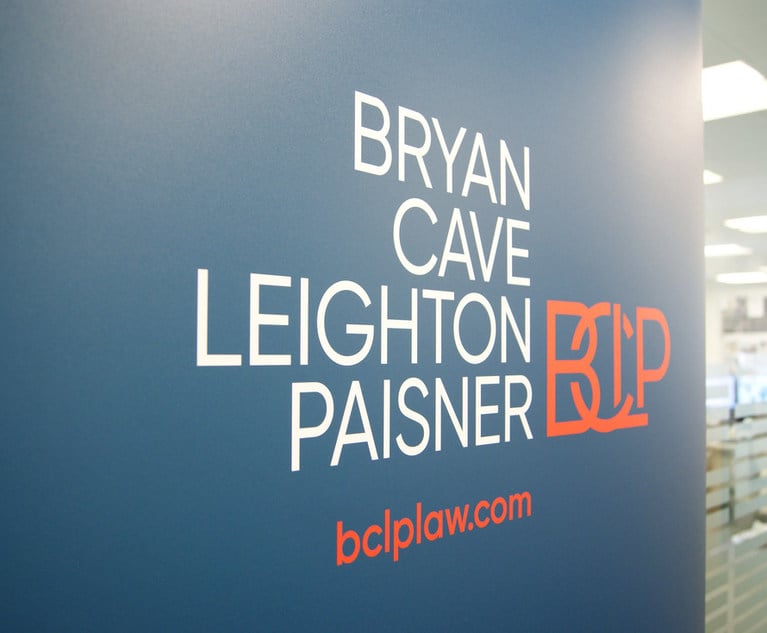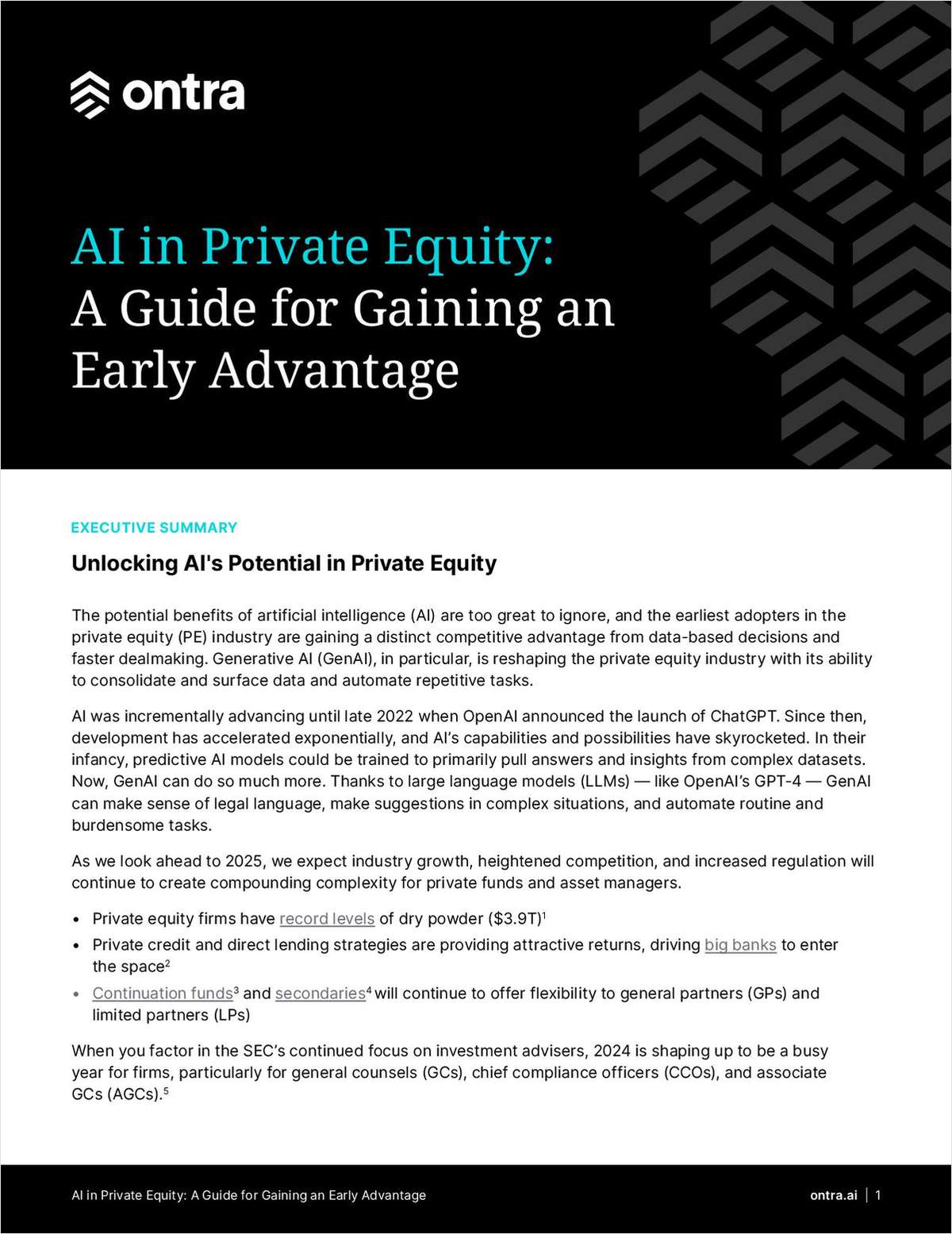Private client and family: Most valued asset
The dangers of volatile assets were highlighted in the recent Myerson case. Alexander Thorpe looks at the impact the recession is having on the substantial changes to the value of assets.
June 04, 2009 at 12:17 PM
8 minute read
The dangers of volatile assets were highlighted in the recent Myerson case. Alexander Thorpe looks at the impact the recession is having on the substantial changes to the value of assets
As specialists will be aware, the recent case of Myerson was decided by the Court of Appeal following extraordinary events occasioned by the economic crisis. There will have been many cases that were settled in 2008 where the collapse in economic confidence caused a fundamental change in the value of assets.
The conditions are parallel to those pertaining during previous recessions where the issue was more often a dramatic fall in the value of the principal asset, the matrimonial home. There has been clear guidance since Hope-Smith v Hope-Smith [1989] to specify the division of the proceeds of sale of a house as a percentage and not as a fixed lump sum. Despite the guidance contained within the jurisprudence, parties do continue to record the amount to be paid or retained as a fixed lump sum, often as a matter of choice rather than by reason of a failure of their legal representatives.
So in a recent case of B v B [2008], a wife elected to take a sum certain and the order provided that, if the house did not to sell for sufficient sum to meet the agreed sum certain, the husband would still be obliged to meet the entirety of the lump sum order. As it transpired, the husband undertook various improvements to the property and marketed it within a few months of the order. Within six months of the order he had exchanged contracts at £375,000 over the anticipated value of £1.25m. The wife sought leave to set aside the order and that permission was refused by the president, who held that the rise in the property market was foreseeable. Clearly, markets in assets of any kind rise and fall with the economic cycle. Predicting where the cycle will rise and fall is how an entrepreneur makes or loses his fortune. As Lord Justice Purchase held in Rundle v Rundle [1992], "Fluctuations in the value of assets, especially real property, may, and almost certainly will, occur one way or the other after the order has been made. To allow this phenomenon to be, of itself, the basis of adducing fresh evidence on an appeal would be contrary to the principle that the discretion to exercise it must be sparingly used and would deny the maxim that there must be finality in litigation."
A specific rise or fall is not foreseeable, but it is foreseeable that assets do rise and fall in value as part of the natural economic cycle. Hence parties should guard against that fact through various mechanisms, such a percentage of the net value following sale and not by way of a lump sum certain; or where there are varying quality of assets, through an equitable sharing of risk. Parties are encouraged to share the plum and the duff, as was held in Wells v Wells [2002]: "If, however, the husband were to carry all the risk and all the disadvantage of the business, the judge's allocation of the risk-free realisable assets was not fair."
In Myerson, Lord Justice Thorpe was robustly dismissive of the arguments raised by Mr Myerson, describing the resolution of the appeal as not difficult. He was able to do so due to the extremely concise and eloquent judgment of Lady Justice Hale, (as she then was), in the case of Cornick v Cornick [No 1] [1994] in which she analysed all the jurisprudence in relation to the change in the value of assets and broke those situations down into three categories:
"(1) An asset which was taken into account and correctly valued at the date of the hearing changes value within a relatively short time owing to natural processes of price fluctuation. The court should not then manipulate the power to grant leave to appeal out of time to provide a disguised power of variation which Parliament has quite obviously and deliberately declined to enact.
"(2) A wrong value was put upon that asset at the hearing which, had it been known about at the time, would have led to a different order. Provided that it is not the fault of the person alleging the mistake, it is open to the court to give leave for the matter to be reopened. Although falling within the Barder principle it is more akin to the misrepresentation or non-disclosure cases than to Barder itself.
"(3) Something unforeseen and unforeseeable had happened since the date of the hearing which has altered the value of the assets so dramatically as to bring about a substantial change in the balance of assets brought about by the order. Then, provided that the other three conditions are fulfilled, the Barder principle may apply. However, the circumstances in which this can happen are very few and far between. The case-law, taken as a whole, does not suggest that the natural processes of price fluctuation, whether in houses, shares or any other property, and however dramatic, fall within this principle."
Mr Myerson's predicament on the appeal was clear. The value of the shares retained by him was a matter of fact, their being listed on the Alternative Investment Market (AIM). The shares had simply fallen in value, but it had been his choice to retain the shares, no doubt in the belief that those shares represented a good prospect. Given his position at the helm of the company, Mr Myerson was best placed to adjudge the prospects of the shares. Given the quality of his representation, the principle of sharing the plum and the duff will have been made known to him, yet he chose the retention of shares. The drop in the value of the shares was therefore part of price fluctuation and Mr Myerson had not chosen to protect himself against such an eventuality. In contrast, in Wells, the court ordered that W should retain the copper bottomed assets and left the husband with the risk and an insufficient asset cushion in the event that risk should fail, and that was found to be unfair to the husband.
An alternative case will shortly appear before the Court of Appeal called M, which is due for hearing in July 2009. The application for permission to appeal out of time was heard by His Honour, Justice Raynor, and centred on a joint valuation of the husband's company by an agreed valuer and settlement at the FDR on the basis of that valuation. Within 11 months of the consent order, the husband had agreed a price for the sale of the company that was five times the joint valuation. The sale was completed five months thereafter. The key ingredients of the case are the assertion that the joint valuation was wrong by reason of mistake by the valuer, thereby falling within category two of Lady Justice Hale in Cornick; and the extent to which the new event, the agreement to sell at a price five times that advised by the valuer, was within the time frame envisaged by Lord Brandon of Oakbrook in Barder v Calouri [1987]:
"A court may properly exercise its discretion to grant leave to appeal out of time from an order for financial provision or property transfer made after a divorce on the ground of new events, provided that certain conditions are satisfied. The first condition is that new events have occurred since the making of the order which invalidate the basis, or fundamental assumption, upon which the order was made, so that, if leave to appeal out of time were to be given, the appeal would be certain, or very likely, to succeed. The second condition is that the new events should have occurred within a relatively short time of the order having been made. While the length of time cannot be laid down precisely, I should regard it as extremely unlikely that it could be as much as a year, and that in most cases it will be no more than a few months. The third condition is that the application for leave to appeal out of time should be made reasonably promptly in the circumstances of the case."
Myerson was found to constitute a case of price fluctuation within the economic cycle and the court has not been prepared to accept such fluctuations in value as grounds to set aside or give permission to appeal a consent order since Cornick was decided in 1994. In order to succeed on such an application, the original value ascribed to the asset must have been sufficiently wrong to render the basis upon which the order was made invalid; or something unforeseen and unforeseeable must have happened since the date of the hearing that altered the value of the asset so as to bring about substantial change in the balance of assets brought about by the order. Price fluctuation, whatever the asset, does not constitute an unforeseen event that is capable of invalidating the basis of the order.
Alexander Thorpe is a barrister at Queen Elizabeth Building Chambers.
This year's Legal Week annual Private Client Forum will be held in Italy from 12-14 November. See www.privateclientforumeurope.com for more information.
This content has been archived. It is available through our partners, LexisNexis® and Bloomberg Law.
To view this content, please continue to their sites.
Not a Lexis Subscriber?
Subscribe Now
Not a Bloomberg Law Subscriber?
Subscribe Now
NOT FOR REPRINT
© 2024 ALM Global, LLC, All Rights Reserved. Request academic re-use from www.copyright.com. All other uses, submit a request to [email protected]. For more information visit Asset & Logo Licensing.
You Might Like
View All
BCLP Mulls Merger Prospects as Profitability Lags, Partnership Shrinks


To Thrive in Central and Eastern Europe, Law Firms Need to 'Know the Rules of the Game'
7 minute readTrending Stories
- 1Weil Advances 18 to Partner, Largest Class Since 2021
- 2People and Purpose: AbbVie's GC on Leading With Impact and Inspiring Change
- 3Beef Between Two South Florida Law Firms Deepens With Suit Over Defamation
- 4Judge Skips Over Sanctions in Talc Bankruptcy: 'That’s A No'
- 5Hit by Mail Truck: Man Agrees to $1.85M Settlement for Spinal Injuries
Who Got The Work
Michael G. Bongiorno, Andrew Scott Dulberg and Elizabeth E. Driscoll from Wilmer Cutler Pickering Hale and Dorr have stepped in to represent Symbotic Inc., an A.I.-enabled technology platform that focuses on increasing supply chain efficiency, and other defendants in a pending shareholder derivative lawsuit. The case, filed Oct. 2 in Massachusetts District Court by the Brown Law Firm on behalf of Stephen Austen, accuses certain officers and directors of misleading investors in regard to Symbotic's potential for margin growth by failing to disclose that the company was not equipped to timely deploy its systems or manage expenses through project delays. The case, assigned to U.S. District Judge Nathaniel M. Gorton, is 1:24-cv-12522, Austen v. Cohen et al.
Who Got The Work
Edmund Polubinski and Marie Killmond of Davis Polk & Wardwell have entered appearances for data platform software development company MongoDB and other defendants in a pending shareholder derivative lawsuit. The action, filed Oct. 7 in New York Southern District Court by the Brown Law Firm, accuses the company's directors and/or officers of falsely expressing confidence in the company’s restructuring of its sales incentive plan and downplaying the severity of decreases in its upfront commitments. The case is 1:24-cv-07594, Roy v. Ittycheria et al.
Who Got The Work
Amy O. Bruchs and Kurt F. Ellison of Michael Best & Friedrich have entered appearances for Epic Systems Corp. in a pending employment discrimination lawsuit. The suit was filed Sept. 7 in Wisconsin Western District Court by Levine Eisberner LLC and Siri & Glimstad on behalf of a project manager who claims that he was wrongfully terminated after applying for a religious exemption to the defendant's COVID-19 vaccine mandate. The case, assigned to U.S. Magistrate Judge Anita Marie Boor, is 3:24-cv-00630, Secker, Nathan v. Epic Systems Corporation.
Who Got The Work
David X. Sullivan, Thomas J. Finn and Gregory A. Hall from McCarter & English have entered appearances for Sunrun Installation Services in a pending civil rights lawsuit. The complaint was filed Sept. 4 in Connecticut District Court by attorney Robert M. Berke on behalf of former employee George Edward Steins, who was arrested and charged with employing an unregistered home improvement salesperson. The complaint alleges that had Sunrun informed the Connecticut Department of Consumer Protection that the plaintiff's employment had ended in 2017 and that he no longer held Sunrun's home improvement contractor license, he would not have been hit with charges, which were dismissed in May 2024. The case, assigned to U.S. District Judge Jeffrey A. Meyer, is 3:24-cv-01423, Steins v. Sunrun, Inc. et al.
Who Got The Work
Greenberg Traurig shareholder Joshua L. Raskin has entered an appearance for boohoo.com UK Ltd. in a pending patent infringement lawsuit. The suit, filed Sept. 3 in Texas Eastern District Court by Rozier Hardt McDonough on behalf of Alto Dynamics, asserts five patents related to an online shopping platform. The case, assigned to U.S. District Judge Rodney Gilstrap, is 2:24-cv-00719, Alto Dynamics, LLC v. boohoo.com UK Limited.
Featured Firms
Law Offices of Gary Martin Hays & Associates, P.C.
(470) 294-1674
Law Offices of Mark E. Salomone
(857) 444-6468
Smith & Hassler
(713) 739-1250










